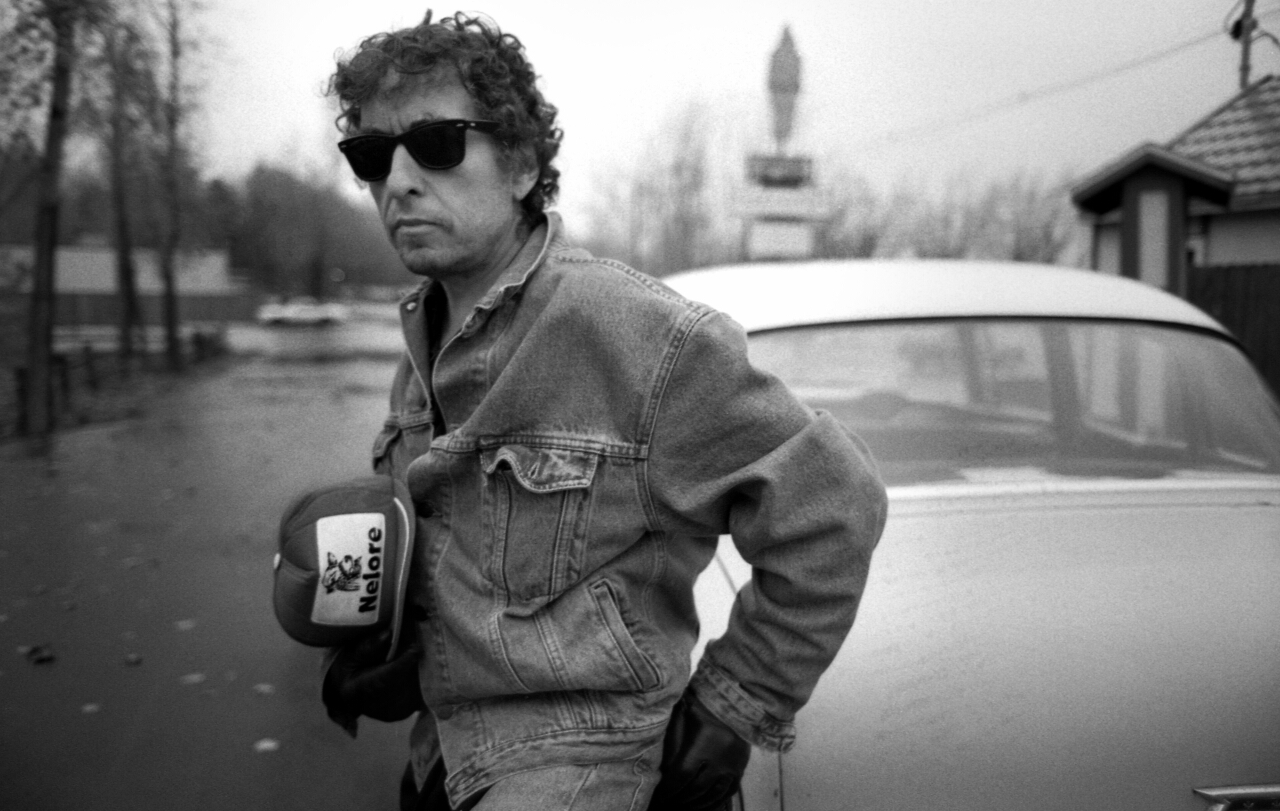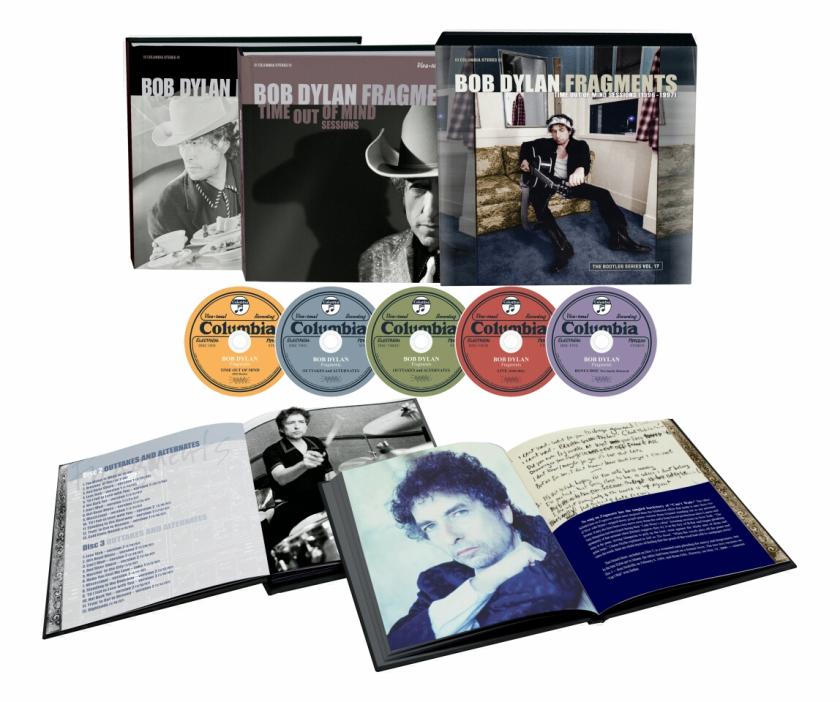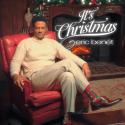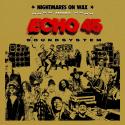The 1997 release of Time Out of Mind was the resurrection of an artist who appeared to have wandered off the reservation some years before, lost in transit on his Never Ending Tour, trailed by an army of "Bobcats" who followed him for show after grinding show. “How can you stand it?” he once asked of a woman who told him she’d seen dozens of NET gigs.
While set lists shifted like tidal sands from night to night, the performances ranged from the ragged and wildly unfamiliar to the singular and revelatory. After attending one of 1991’s woeful run of shows at Hammersmith Odeon during a bitter February cold snap, I’d more or less put Dylan on mute, even missing the first of his two acoustic releases, Good as I Been to You, while belatedly lapping up the second, World Gone Wrong. With the first Bootleg Series emerging from his archives in 1991, laden as it was with hidden jewels from his past, indications were that the man’s writing days could well be over.
Then, seemingly out of nowhere, came Time Out of Mind. I recall hearing one of its songs while sat with a coffee and brandy in a cafe in Seville that September. It was “Lovesick” and it sounded great. A return to form, a creative resurrection. The album was, as we know, a huge Grammy Award-winning success, opening up the riches of Dylan’s later career that few saw coming before it came.
It’s the capturing of work in progress that dazzles as you listen in to these fly-on-a-studio-wall versions
Some 25 years later, the Bootleg Series has now reached Volume 17, and its latest iteration, Fragments (shored against his ruins?), devotes five discs to the Time Out of Mind sessions and subsequent live highlights. The set – both the 10-album, 5-CD complete set and two-disc cut-down – opens with a remix of the original album, made with the intention of lifting the veil of post-production textures conjured by producer Daniel Lanois and to deliver back the "sound of the room" that the many musicians present would have heard while playing these songs.
The two discs of studio out-takes include a small but precious handful from the original Teatro sessions, which featured just Dylan, Lanois, bassist Tony Garnier and percussionist Tony Mangurian. The majority are from Criteria in Miami, where 14 musicians squeezed into the studio. This is the meat and drink of the set, and features multiple run-throughs of songs that have since become classics – “Trying’ To Get to Heaven”, “Not Dark Yet”, “Cold Irons Bound”, “Standing in the Doorway”, “Mississippi”. All of them. Even the oft-reviled “Make You Feel My Love” gets an alt-take which ends in a round of studio applause, while the mighty “Highlands” has its own out-take, too, bouncing merrily along with Dylan’s very funny, sometimes poignant shaggy dog story leading the way.
The stand-outs are to be found among those Teatro sessions. There’s a spectral, deeply moving take of the Scottish ballad “The Water Is Wide”, which is the one “new” song in the Time Out of Mind canon represented here (also a set stalwart of the Rolling Thunder years); a soulful, piano-led “Dreamin’ of You”; a lean, exploratory account of “Red River Shore”; and a “Til I Fell in Love With You” that’s loose, bluesy, and full of alternative lyrics, with some of its lines later migrating to other songs during the January Criteria sessions. It’s this capturing of work in progress that dazzles as you listen in to these fly-on-a-studio-wall versions of songs as they began to shape and solidify themselves and assume the forms that have since become canonical. Follow “Til I Fell In Love With You” from that first iteration at Teatro through two increasingly honed versions from Criteria, and a blasting live performance from Buenos Aires in 1998 (co-headlining with The Rolling Stones), and you’re witnessing the flow of creation in real time, between Dylan and his band, the architecture of the music and the lyrics shifting their forms around the song’s core. The same goes for the likes of “Mississippi”, with five studio iterations and one live account.
It’s this capturing of work in progress that dazzles as you listen in to these fly-on-a-studio-wall versions of songs as they began to shape and solidify themselves and assume the forms that have since become canonical. Follow “Til I Fell In Love With You” from that first iteration at Teatro through two increasingly honed versions from Criteria, and a blasting live performance from Buenos Aires in 1998 (co-headlining with The Rolling Stones), and you’re witnessing the flow of creation in real time, between Dylan and his band, the architecture of the music and the lyrics shifting their forms around the song’s core. The same goes for the likes of “Mississippi”, with five studio iterations and one live account.
While you’ll find lovely early versions of great songs like “Tryin to Get to Heaven” and “Not Dark Yet”, and two utterly haunting, spectral early takes of “Love Sick”, there aren’t the kind of revelatory, previously unheard-of songs that featured on Tell Tale Signs. The early takes on Fragments all flow in one direction, towards their ultimate resolution on Time Out of Mind, of which Dylan said: “it’s the first album I’ve done in a while where I’ve protected the songs for a long time”. You can chart the progress of that protection across discs two and three, as well as on the fifth disc’s collection of previously released out-takes, originally issued in the three-disc edition of Tell Tale Signs.
Disc four, meanwhile, gathers concert recordings, most of them sounding like good-quality bootlegs from the 1998-2001 period – not long before he exchanged his guitar for the piano on stage. A version of “Make You Feel My Love” from LA in 1998 is a highlight, as is a rare outing for “Highlands”, racked out across 10 minutes of funny, consummate storytelling.
There are some who resent the Lanoisesque fog that permeates the released album, which is why, unusually in Dylan’s catalogue, Fragments begins with a new "naked" mix by Michael H Brauer, who’s won Grammy Awards for his production work for Coldplay, Angelique Kidjo and John Mayer. The original album’s sound is one I’ve loved for years, one that’s embedded into the very bones of my listening experience, and hearing these "naked" mixes is a disconcerting experience, as if you’ve discovered your entire memory’s slightly wrong, that it doesn’t go like that, it’s been going like this all along.
Listeners will hear a lot of clarity in terms of picking out what the players were doing down there in Miami, and that can be a revelation. The minor “Dirt Road Blues” in particular benefits from Brauer’s buff and shine, as does the mega “Highlands”, where the two weaving guitar riffs and percussion leap into focus, along with the slides and steel glides of Bucky Baxter and Cindy Cashdollar. There’s a lot more going on than you knew, although who knows if you’ll end up playing this one more often than the original.
Little did anyone know that rather than being any closing statement, TOOM was a mid-career high point
If you loved Time Out of Mind, this volume in the Bootleg Series is like taking the approach road to nirvana. The two central discs of previously unreleased out-takes are the high points, with the remix and live disc not far behind. Historian and writer Douglas Brinkley and music critic Steven Hyden contribute essays for the beautifully put-together boxed set, with Brinkley framing the album’s genesis and its themes of age, love, loss and death around the unexpected passing of Dylan’s friend Jerry Garcia in 1995, aged just 53. It’s worth noting how Dylan, a youngster of 55 at the time, was depicted by Gen-X rock scribes – as an ancient of days whose voice sounded older than the hills, a solitary prophet – of doom, mostly – walking out of the desert and right through your door, unleashing songs that seemed to speak of your ultimate destiny. Add to that Dylan’s hospitalisation shortly after the sequencing of the album, and Mr Death seems to have had an almost hands-on role throughout. Almost, but not quite.
Little did anyone know back then that rather than being any closing statement, TOOM was a mid-career high point by a fully matured artist quenching his thirst at the well once more. “Maybe a person gets to the point where they have written enough songs,” he’d told Paul Zollo for Songtalk, back in 1991. “Let someone else write them.” Well, now he was that someone else, his resuscitated muse drawing on a broad frame of folkloric sources to shape and underpin a new kind of lyric that considered the hard things of life with a sharpness of wit and such a wicked sense of timing that it makes you want to laugh aloud, just as you felt the dread creeping in.
One wonders where in time the Bootleg Series material will go next – back to Street Legal, perhaps, to the early days of Greenwich Village, or to the 1993 Supper Club sets – all indications suggest that this archival magical mystery tour has some way to go yet, just as we hope that Dylan’s road, snaking out of 2020’s majestic Rough and Rowdy Ways, still has some valuable miles to run.















Add comment